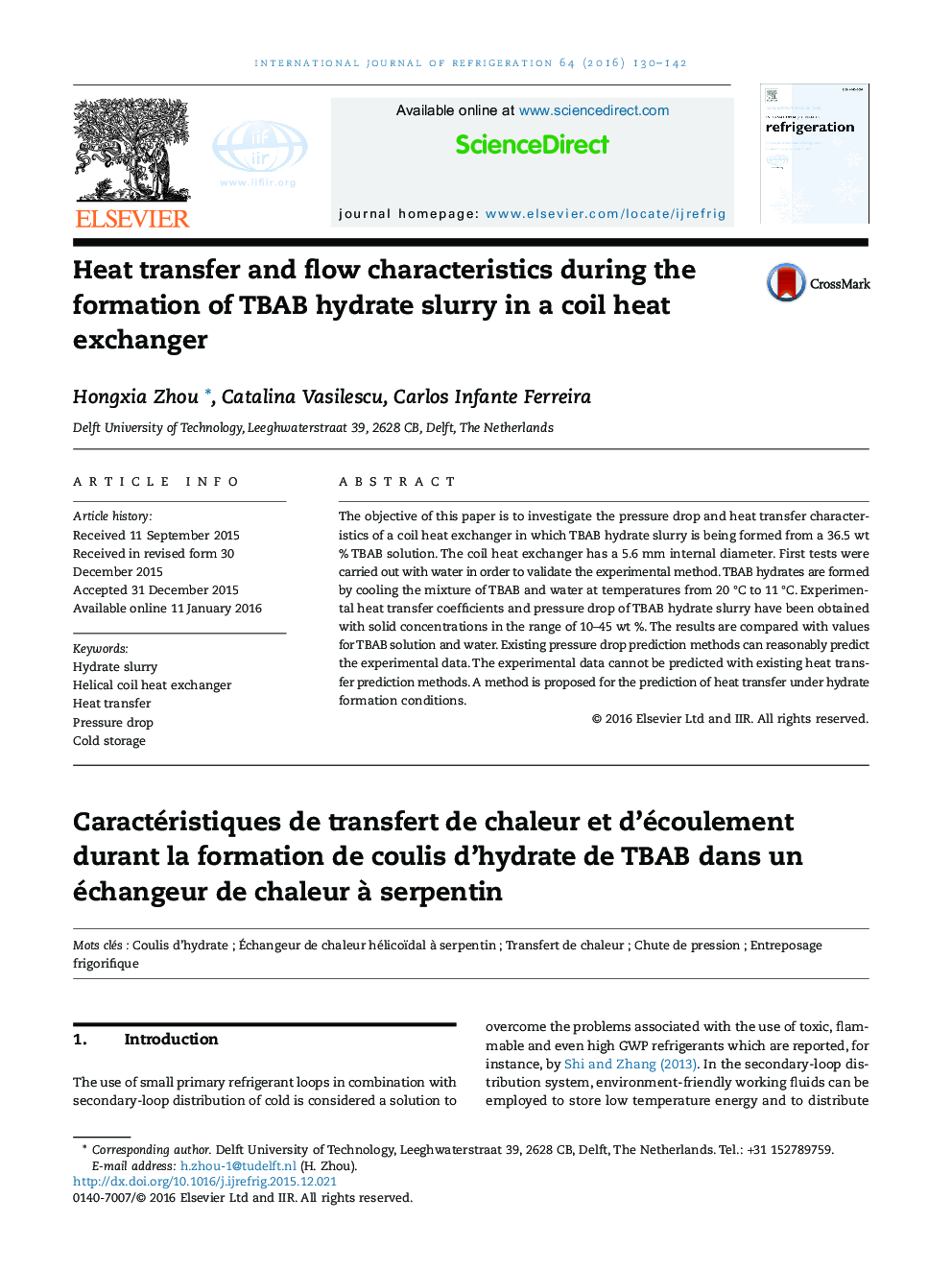| Article ID | Journal | Published Year | Pages | File Type |
|---|---|---|---|---|
| 786771 | International Journal of Refrigeration | 2016 | 13 Pages |
•TBAB hydrate slurry formation in a coil heat exchanger is investigated.•Up to 40% solids, pressure drop of the TBAB hydrate slurry can be predicted with existing methods.•A method is proposed for heat transfer prediction under hydrate formation conditions.•TBAB hydrate slurry can run continuously in the system up to a solid concentration of 45%.
The objective of this paper is to investigate the pressure drop and heat transfer characteristics of a coil heat exchanger in which TBAB hydrate slurry is being formed from a 36.5 wt % TBAB solution. The coil heat exchanger has a 5.6 mm internal diameter. First tests were carried out with water in order to validate the experimental method. TBAB hydrates are formed by cooling the mixture of TBAB and water at temperatures from 20 °C to 11 °C. Experimental heat transfer coefficients and pressure drop of TBAB hydrate slurry have been obtained with solid concentrations in the range of 10–45 wt %. The results are compared with values for TBAB solution and water. Existing pressure drop prediction methods can reasonably predict the experimental data. The experimental data cannot be predicted with existing heat transfer prediction methods. A method is proposed for the prediction of heat transfer under hydrate formation conditions.
